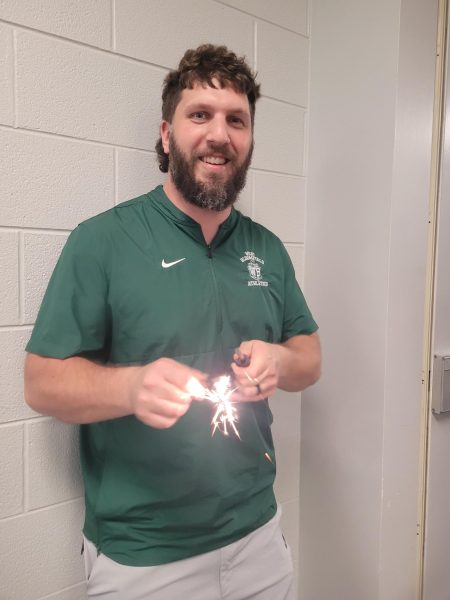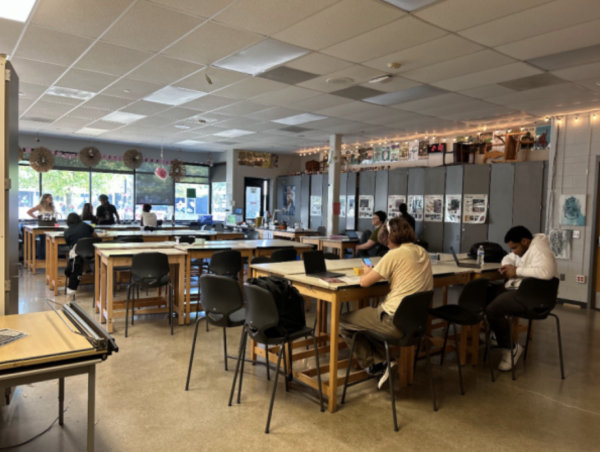Compassion vs. Success
At what point does kindness and empathy become a greater motivator than fear? For decades, kids have spent countless hours in sports practices juxtaposed between building a positive bond with teammates and being brought down by the adult in charge of teaching and growing.
On the front page of our school’s website, it expresses the administration’s mission of curiosity, critical thinking, kindness, and the ability to communicate. So, presumably, this environment should be encouraged and represented in all classrooms, clubs, and athletics. Although, when looking deeper into students’ stories, discrepancies highlight a bigger problem within the culture of athletics and its community.
Lynn Swerhone, the mental health specialist for the school, is a part of the district to provide extra mental health support to the other counselors and the students. She has experience as a therapist working in the West Bloomfield community and spoke about what she believes the goal of athletics should be in the eyes of the school.
“I think the goal of anything in school is to encourage students to develop their interests and develop as people,” Swerhone states, “That’s what as a school, we’re here to do is to encourage students to discover new things about themselves and develop new interests and kind of put themselves out there and try new things.”
However, when students feel contradicted by the statement above, they should be warranted a place to advocate for themselves. In 2021, a new coach was hired for the 2021-2022 season to coach the girl’s swim team and then fired by the district following the not long ago firing of coach Wardlaw. Many swimmers and divers were initially motivated to move on and continue their athletic experience; however, the season hadn’t gone as many of the athletes had planned.
“It was like the swimmers against the coaches,” from a West Bloomfield High School athlete, “Sports are meant to be fun and not very stressful. People talked behind each other’s backs during the beginning of swim season.”
During the interview, this athlete noted that sports should not be existing in a harsh environment, such as the one they experienced. This atmosphere can be absolutely crushing to students’ spirit, morals, and love for their sport. Swerhone discussed briefly the impact a negative environment for kids and teens can have and what it can look like from the outside.
“I think a negative environment would probably look like an environment where students may feel discouraged and feel like they’re not accepted for who they are. Or, students are kind of put down and are made to feel bad about themselves.”
When a student is repeatedly left in an isolating and dismissive situation, it leaves an impact on the student’s mental health inside and outside of the gym. Put into this situation, athletes will begin to question. Is this just a moment I have to persevere through, or is there a change that can be made? Unfortunately, many students inside our school decided to leave their respective athletic programs after months of emotional and mental exhaustion.
Across programs, sports, and team levels, many athletes share the same or similar stories under different circumstances. Talking to current West Bloomfield athletes proved that we are not immune or an exception to this culture. Despite the success or image of each team, there are countless students who have not yet shared their story and been swept under the rug of toxic athletics.
There are years worth of stories from student athletes. Students have experienced and witnessed uncomfortable relationships between coach and student, prioritization of extracurricular over doctors appointments, weddings, and funerals, excessive yelling or mocking of a student’s ability, locked in rooms intentionally, dehydrated because there is never a moment to waste of practice and the constant reminder that their commitment to a hobby is always worth more than their commitment to themselves.
So, again, at what point is kindness more powerful than fear or intimidation? The answer is a gray area, especially as coaching styles have evolved over the years. Moving into the 2020s, the old-style coaching of aggression, throwing objects, and berating athletes have progressed. While it can be claimed that using kindness over intimidation isn’t a great enough motivator, at some point athletes become drained and instead their progress is stunted by toxic environments.
“He hasn’t helped me improve my skill set the entire time I’ve been with this sport. I felt like I was kind of pushed to the back,” says a multi-sport athlete at WB, “I think my skills would have improved if my coach had given me more critiques rather than focusing on those that didn’t need them as much.”
Season after season, athletes and students are isolated and neglected by coaches, assistants, and administration. Instead of coaches initiating a positive team environment, it is upon the students and teammates to make the best of their situation.
“It wasn’t a very welcoming environment. It wasn’t until I was an upperclassman that I felt a part of the team.”
Nonetheless, at some point, the people watching over and in charge of the culture created within athletics should reflect on mistakes and work towards a better circumstance. Prioritizing the aspects of working with a high school and its athletes. Geo Thomas, a long-time coach with Central Michigan Universities football and basketball programs and camps has a lot of passion for the game and building a positive athletic environment.
“Number one priority is to gain confidence in their abilities. Not everybody’s a great basketball player, but everybody has value,” Thomas states, “And that’s my goal, to teach them they have value whether it’s saying positive words to their teammates, maybe it’s just defense, maybe they’re good ball-handlers, or whatever their strength is. I want them to have confidence.”
Thomas has been coaching since 1987 and has seen every level from college to kindergarten. Yet, he continued to emphasize the importance of building confidence, character, and passion over championships and winning records. Again, referencing Swerhone’s opinions, she describes what she also believes is important for student-athletes.
“An environment that supports students for who they are and for what they’re interested in…a positive environment would be one that encourages students to develop their strengths as athletes.”
These qualities are invaluable to creating what has been discussed as a positive athletic experience. They help build students up and give them the strength that they can take with them outside the gym, course, court, or field. Thomas always thinks bigger picture when coaching a team and wants to make sure the time and drills he creates in the gym, involve bigger life lessons for the athletes.
“When they walk out, they know how to handle adversity, they know how to handle difficult role models, pressure situations and whatever they’re capable of learning as far as confidence, I want to teach it.”
So, is kindness and empathy more valuable to an athlete and their success? Most likely, this can only be answered through real-life trial and error. Attempting to focus more on building athletes up and watching them progress.
“A good coach makes me feel like we’re equals, especially when we’re talking. It doesn’t feel like it’s one of us over the other,” says WB athlete.
This culture and old-style coaching cycle has existed for a long time but isn’t impossible to break. From the start of the hiring process to creating an atmosphere that makes athletes feel safe and accepted, these feelings aren’t inevitable. Although to begin with, it’s important to define what a positive environment for teen athletes can look like.
“Students are encouraged to develop their skills, work together as a team, and be passionate about whatever sport or activity they’re pursuing,” Swerhone states, “I think adults can work on getting to know their students, creating those relationships and just working on kind of encouraging students to develop those talents and work towards their strengths and just overall being positive.”
Connecting to the statements from Swerhone, Thomas looks for a lot of these qualities when hiring a new coach. Currently, Thomas is running Motor City Evolution, a boys and girls basketball program. Mostly focused on younger players and younger, developing coaches. When hiring a new coach, there are important qualities that he looks for.
For Thomas, energy and passion are the more valuable coaching traits, alongside reliability. He wants his coaches to be excited and motivated about what they’re doing and teaching others.
“I think that is ultimately what makes any employee, student, or coach, that they’re excited to be there,” Thomas explains, “So, the first question I ask is, tell me about yourself. If they can speak with passion and energy about school, sports, religion, whatever, I gravitate to those types of people.”
Ultimately, the adults deciding what’s best for students are in the hands of a lot of people. So, it is crucial that those in positions above the athletes, think consciously and with kindness about the impact their decisions may have. To put themselves in the shoes of the students and walk around for a bit.
Your donation will support the student journalists of West Bloomfield High School. Your contribution will allow us to purchase equipment and cover our annual website hosting costs.

Hey! I'm a Senior at WB and I love writing and being a journalist for the school newspaper. I also love being involved with our school's music program...










